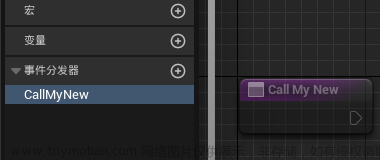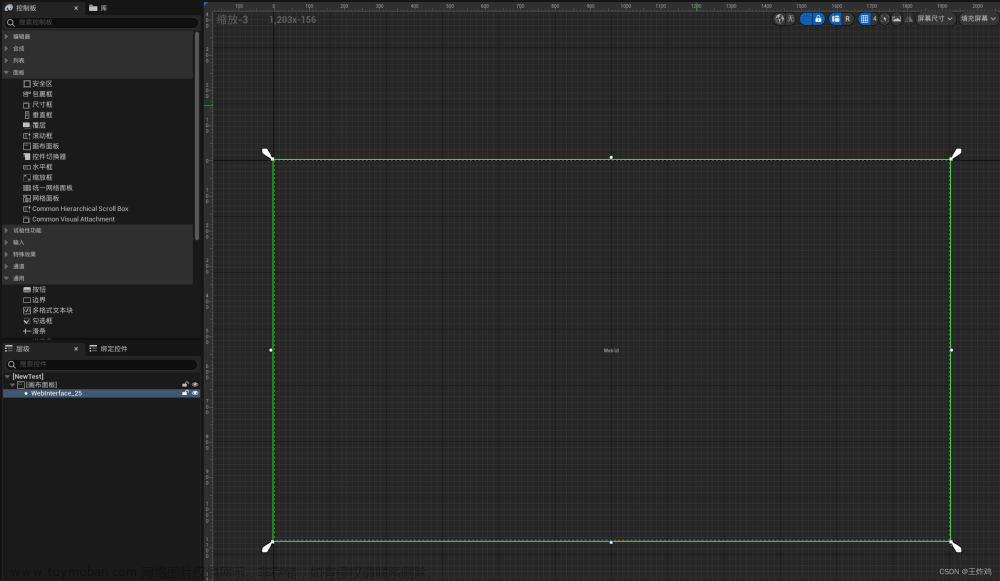Lyra里使用了增强输入系统,首先知道增强输入系统里的三个类型配置。
一、Input Actions (IA):
输入操作带来的变量,与玩家的输入组件绑定,回调里驱动玩家行为。
二、InputMappingContext(IMC):
表示一套按键输入配置,让按键与IA绑定,从而使用按键携带的变量驱动IA生效。
IMC上确定哪个按键驱动哪个IA,比如键盘Q是隐射使用技能一的IA还是技能二的IA。
三、UPlayerMappableInputConfig(PMI):
对IMC进行配置,进一步模块化。
PMI是跟硬件设备挂钩的配置,PMI里携带IMC,比如输入设备是PC键盘还是手柄类型的PMI,游戏根据硬件设备驱动生效对应的PMI。
所以,看懂Lyra的IA、IMC、PMI配置在哪里、在哪来生效大概就看懂他的输入系统了。
首先是DefaultExperience的圆柱体人移动操作:
IA:
1、配置
这个编辑器里启动场景的Experience蓝图是B_LyraDefaultExperience,所生成的简单圆柱体角色数据来自里面的DefaultPawnData变量,指向数据资产SimplePawnData,IA则就配置在SimplePawnData的InputConfig变量指向的数据资产InputData_SimplePawn。所以,这个默认圆柱体角色的IA配置就在这
2、绑定:
IA的绑定是在Experience加载完成后初始化调用下来开始初始化的在:
ULyraHeroComponent::InitializePlayerInput(UInputComponent* PlayerInputComponent)里初始化。
void ULyraHeroComponent::InitializePlayerInput(UInputComponent* PlayerInputComponent)
{
...
//Ability类功能绑定
// Add the key mappings that may have been set by the player
LyraIC->AddInputMappings(InputConfig, Subsystem);
//基础移动功能绑定
// This is where we actually bind and input action to a gameplay tag, which means that Gameplay Ability Blueprints will
// be triggered directly by these input actions Triggered events.
TArray<uint32> BindHandles;
LyraIC->BindAbilityActions(InputConfig, this, &ThisClass::Input_AbilityInputTagPressed, &ThisClass::Input_AbilityInputTagReleased, /*out*/ BindHandles);
LyraIC->BindNativeAction(InputConfig, LyraGameplayTags::InputTag_Move, ETriggerEvent::Triggered, this, &ThisClass::Input_Move, /*bLogIfNotFound=*/ false);
LyraIC->BindNativeAction(InputConfig, LyraGameplayTags::InputTag_Look_Mouse, ETriggerEvent::Triggered, this, &ThisClass::Input_LookMouse, /*bLogIfNotFound=*/ false);
LyraIC->BindNativeAction(InputConfig, LyraGameplayTags::InputTag_Look_Stick, ETriggerEvent::Triggered, this, &ThisClass::Input_LookStick, /*bLogIfNotFound=*/ false);
LyraIC->BindNativeAction(InputConfig, LyraGameplayTags::InputTag_Crouch, ETriggerEvent::Triggered, this, &ThisClass::Input_Crouch, /*bLogIfNotFound=*/ false);
LyraIC->BindNativeAction(InputConfig, LyraGameplayTags::InputTag_AutoRun, ETriggerEvent::Triggered, this, &ThisClass::Input_AutoRun, /*bLogIfNotFound=*/ false);
...
}
IMC:
配置:
编辑器里默认起始场景的圆柱体玩家的IMC配置在蓝图B_SimpleHeroPawn的LyraHero组件的变量DefaultInputConfigs上。(但进入到射击游戏里,角色的IMC则是来自插件的配置,稍后提到):
IMC需要添加到PlayerController身上的UEnhancedInputLocalPlayerSubsystem才会生效。
IMC的添加地方和IA同在一个方法里,ULyraHeroComponent::InitializePlayerInput(UInputComponent* PlayerInputComponent)
void ULyraHeroComponent::InitializePlayerInput(UInputComponent* PlayerInputComponent)
{
// Register any default input configs with the settings so that they will be applied to the player during AddInputMappings
for (const FMappableConfigPair& Pair : DefaultInputConfigs)
{
if (Pair.bShouldActivateAutomatically && Pair.CanBeActivated())
{
FModifyContextOptions Options = {};
Options.bIgnoreAllPressedKeysUntilRelease = false;
// Actually add the config to the local player
Subsystem->AddPlayerMappableConfig(Pair.Config.LoadSynchronous(), Options);
}
}
}
走到这里是可以通过键盘操作玩家移动了。
从上面的for知道,DefaultInputConfigs变量里配置的IMC如果是空的话是没有添加到SubSystem的,射击游戏里的角色就没有配置,它们的IMC是通过插件方式来添加的,这么说了还有另外一个地方会调用Subsystem->AddPlayerMappableConfig(Pair.Config.LoadSynchronous(), Options)。
PMI:
PMI是通过插件的UGameFeatureAction_AddInputConfig 来配置的,PMI里携带了IMC,配置在插件ShooterCore里,所以就会发现,射击游戏里的人形角色B_Hero_ShooterMannerquin的LyraHero组件里并没有配置IMC:
PMI里携带了IMC,配置在插件ShooterCore里:
B_Hero_ShooterMannerquin的LyraHero组件里并没有配置IMC,那么上面展示的代码ULyraHeroComponent::InitializePlayerInput(UInputComponent* PlayerInputComponent)里的Subsystem->AddPlayerMappableConfig()就不会执行,它的输入IMC是在UGameFeatureAction_AddInputConfig::AddInputConfig(APawn* Pawn, FPerContextData& ActiveData)注册的,这个也是加载完Experience后执行的方法:
而在添加到SubSystem前还会写入本地输入设置,保存玩家的输入配置,用于给玩家在UI上访问与修改按键操作
bool FMappableConfigPair::RegisterPair(const FMappableConfigPair& Pair)
{
ULyraAssetManager& AssetManager = ULyraAssetManager::Get();
if (ULyraSettingsLocal* Settings = ULyraSettingsLocal::Get())
{
// Register the pair with the settings, but do not activate it yet
if (const UPlayerMappableInputConfig* LoadedConfig = AssetManager.GetAsset(Pair.Config))
{
Settings->RegisterInputConfig(Pair.Type, LoadedConfig, false);
return true;
}
}
return false;
}
写入SubSystem文章来源:https://www.toymoban.com/news/detail-663702.html
void UGameFeatureAction_AddInputConfig::AddInputConfig(APawn* Pawn, FPerContextData& ActiveData)
{
...
for (const FMappableConfigPair& Pair : InputConfigs)
{
if (Pair.bShouldActivateAutomatically && Pair.CanBeActivated())
{
Subsystem->AddPlayerMappableConfig(Pair.Config.LoadSynchronous(), Options);
}
}
...
}
玩家更改键位输入的方法是:ULyraSettingsLocal::AddOrUpdateCustomKeyboardBindings(const FName MappingName, const FKey NewKey, ULyraLocalPlayer* LocalPlayer)。文章来源地址https://www.toymoban.com/news/detail-663702.html
到了这里,关于UE5.2 LyraDemo源码阅读笔记(五)输入系统的文章就介绍完了。如果您还想了解更多内容,请在右上角搜索TOY模板网以前的文章或继续浏览下面的相关文章,希望大家以后多多支持TOY模板网!













